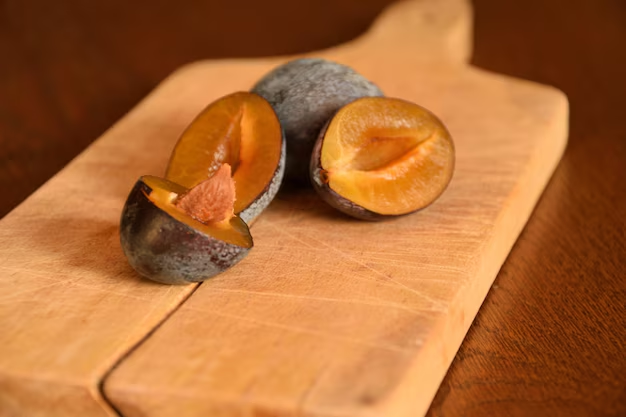Can Diabetics Safely Enjoy Plums?
For those managing diabetes, questions about diet are often at the forefront of daily life. Many diabetics ask themselves whether certain fruits can fit into their meal plans without causing spikes in blood sugar levels. Plums, with their juicy sweetness, often come into this scrutiny. Are plums a safe choice for diabetics?
Nutritional Benefits of Plums
At first glance, plums might seem like a sweet indulgence too risky for diabetics. However, these fruits offer a variety of nutritional benefits that may actually support diabetes management. Plums are relatively low in calories and have a moderate amount of carbohydrates. A medium-sized plum contains about 8 grams of carbohydrates and carries a low glycemic index (GI) score, meaning plums have a minor effect on blood glucose levels when consumed in moderation.
These delicious fruits are packed with vitamins C and K, fiber, and antioxidants such as phenols and flavonoids. The fiber content, in particular, can help regulate blood sugar by slowing the absorption of carbohydrates in the bloodstream, reducing the impact on blood sugar levels.
Plums in a Diabetic Diet
Given their nutrient profile, plums can be included in a diabetic diet. However, portion control is crucial. Diabetics should pair plums with a source of protein or healthy fats to further mitigate blood sugar spikes. For example, enjoying a plum as part of a balanced snack with almonds or yogurt can be a smart way to enjoy their sweetness without compromising blood glucose control.
Beyond Diet: Financial and Educational Resources for Diabetics
Managing diabetes effectively means looking beyond just dietary choices. Financial and educational resources play a key role in ensuring that individuals with diabetes can access necessary medical care, education, and dietary guidance.
Those navigating the complexities of diabetes management might also consider exploring potential financial aids and resources:
Health Insurance Programs: Coverage options like Medicaid or Medicare can help manage the costs associated with diabetes care, including access to medication, supplies, and appointments with healthcare professionals.
Diabetes Education Grants: Some organizations offer educational grants or scholarships for diabetic education courses, which can be crucial in learning how to effectively manage the condition.
Government Aid Programs: Programs like SNAP (Supplemental Nutrition Assistance Program) can help ensure access to nutritious foods, including fresh fruits like plums.
Financial Assistance for Medications: Assistance programs from pharmaceutical companies or nonprofit organizations can reduce the cost burden of diabetes medications.
Taking advantage of these resources can ease some of the financial stress associated with diabetes management, allowing more focus on maintaining health and wellness.
Key Takeaways and Resource Options
Plums can be a tasty and nutritious part of a diabetic’s diet when consumed in moderation and paired with proteins or healthy fats. Balancing dietary choices with comprehensive financial and educational resources can lead to more effective diabetes management.
🔹 Medicaid & Medicare: Health coverage solutions
🔹 SNAP: Nutritional aid for low-income individuals
🔹 Pharmaceutical Assistance Programs: Easing medication costs
🔹 Diabetes Education Grants: Supporting informed diabetes management
Armed with the right tools and knowledge, those managing diabetes can lead healthier, more empowered lives, enjoying fruits like plums along the way.
